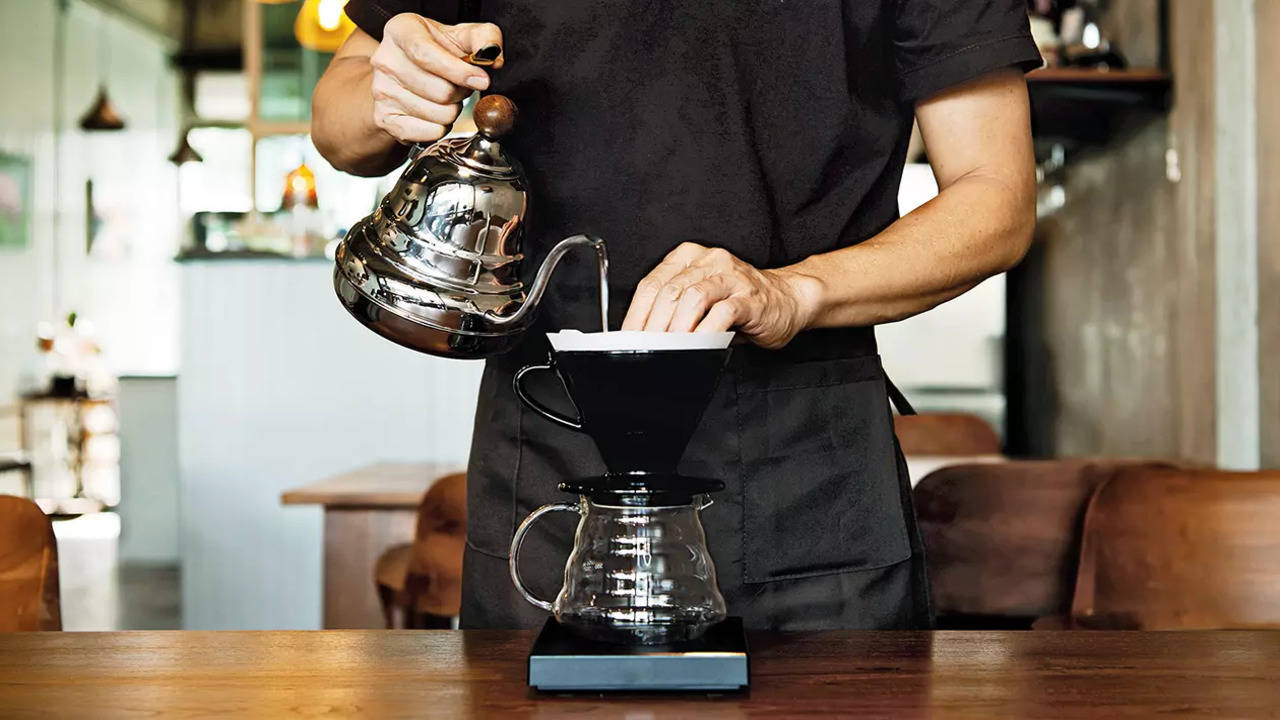

In Pakistan, where high-altitude regions like Murree, Gilgit, and Hunza offer a beautiful and diverse landscape, coffee lovers face unique challenges when brewing their favorite beverage.
While many might not immediately associate altitude with coffee brewing, it plays a crucial role in the final taste and texture of your cup. High altitudes affect the boiling point of water, the extraction process, and even the flavor profile of your coffee.
This blog will dive into how brewing coffee at higher elevations in Pakistan changes the process and offer practical tips to improve your brew, so you can enjoy coffee that’s rich, balanced, and flavorful, no matter how high the elevation.

At sea level, water boils at 100°C (212°F). But at higher altitudes, like in the mountains of Pakistan, the air pressure is lower, which means water boils at a lower temperature.
This can affect how the coffee is extracted during brewing. Lower water temperature may not extract enough of the coffee's flavors, leading to a weak or underwhelming cup.
To overcome this, you may need to adjust the brewing method. For instance, extending the brewing time or adjusting the grind size can help to extract more flavor at lower temperatures.
Also, water quality plays an essential role in the brewing process. Impurities or minerals in the water can affect the extraction, especially at high altitudes. If you want to learn more about how water quality affects your coffee, it’s important to check the purity and mineral content of the water you’re using.
One of the most noticeable effects of brewing coffee at high altitudes is how it changes the flavor. The lower boiling point at higher elevations results in a less efficient extraction of flavors from the coffee grounds. This often leads to a cup that might taste sour, under-extracted, or simply "flat."
To fix this, you may need to brew your coffee longer than usual, allowing the lower-temperature water more time to extract the rich flavors of the beans. This is especially important in mountainous regions of Pakistan, where temperature fluctuations can further complicate the brewing process.
If you're brewing espresso or other methods that require high pressure, altitude can also affect how your machine performs. It's important to account for these factors to ensure you get the best flavor out of your beans.
To get the best results when brewing coffee at high altitudes in Pakistan, you’ll need to make a few adjustments. Here’s what you can do:
With these adjustments, you’ll get the most out of your coffee beans, even at high elevations.
High-altitude regions are ideal for growing certain types of coffee beans, and those beans often have more complex and vibrant flavors. Beans from regions like Pakistan’s mountainous areas tend to have bright acidity and floral notes. These beans thrive in cooler climates, where they mature slowly, allowing more complex flavors to develop.
When brewing coffee at high altitudes, choose beans that are known for their vibrant and floral notes. Lighter roasts often perform better at high elevations because they preserve the delicate flavors that can be lost with heavier roasts.
While brewing coffee in Pakistan’s mountainous areas offers unique flavors, it also comes with challenges. The most significant issues are temperature and water quality. As the temperature fluctuates throughout the day, you may need to adjust your brewing techniques accordingly.
For example, morning temperatures are cooler, and the water may be even less hot, so you might need a slightly longer brewing time.
The quality of water can also be inconsistent in mountainous regions. If you’re using tap water, it may contain minerals that impact the flavor of your coffee.
To improve consistency, you may want to use filtered or bottled water, or consider investing in a water filtration system to ensure that your coffee remains flavorful, no matter where you are.
Here’s a simple, step-by-step guide to brewing the perfect cup at high altitudes in Pakistan:
By following these steps, you’ll enjoy a more balanced, flavorful cup of coffee, even in the mountains of Pakistan.
Brewing espresso at high altitudes requires some specific adjustments. Espresso relies on high pressure to extract flavors, and at higher altitudes, the air pressure is lower, which can affect how the espresso machine works. This can lead to a less intense extraction or issues with machine performance.
To combat this, consider adjusting your espresso machine’s settings to account for the lower air pressure. If you’re serious about espresso at altitude, investing in commercial coffee machines that are built to handle these conditions can make a big difference.
Machines with adjustable pressure settings and temperature controls will help you maintain the perfect espresso brew.
Water quality is always important for brewing great coffee, but it becomes even more crucial at higher altitudes. In mountainous areas of Pakistan, the water quality can vary greatly. Impurities, mineral content, or even the water’s temperature can influence the extraction process.
To ensure you're brewing the best coffee, use clean, filtered water. If the water in your area is too hard or soft, it may affect the taste. Investing in a water filtration system can significantly improve the flavor of your brew. For more information on how water quality impacts your coffee, check out our guide on the water quality impact on brewing.
Brewing coffee at high altitudes in Pakistan presents some unique challenges, but with the right adjustments, you can brew coffee that’s just as rich and flavorful as coffee brewed at sea level.
By understanding the science behind high-altitude brewing and making small tweaks to your grind size, brewing time, and water temperature, you can enjoy a perfectly brewed cup every time.
Experiment with different brewing methods and beans, and don’t be afraid to adapt your equipment. With the right coffee machine and techniques, you can elevate your coffee experience in Pakistan’s mountainous regions.
What’s your experience with brewing coffee at high altitudes? Share your tips and experiences in the comments below! If you're looking for coffee machines in Pakistan that can handle high-altitude brewing, check out our recommendations for the best models to suit your needs. Happy brewing!